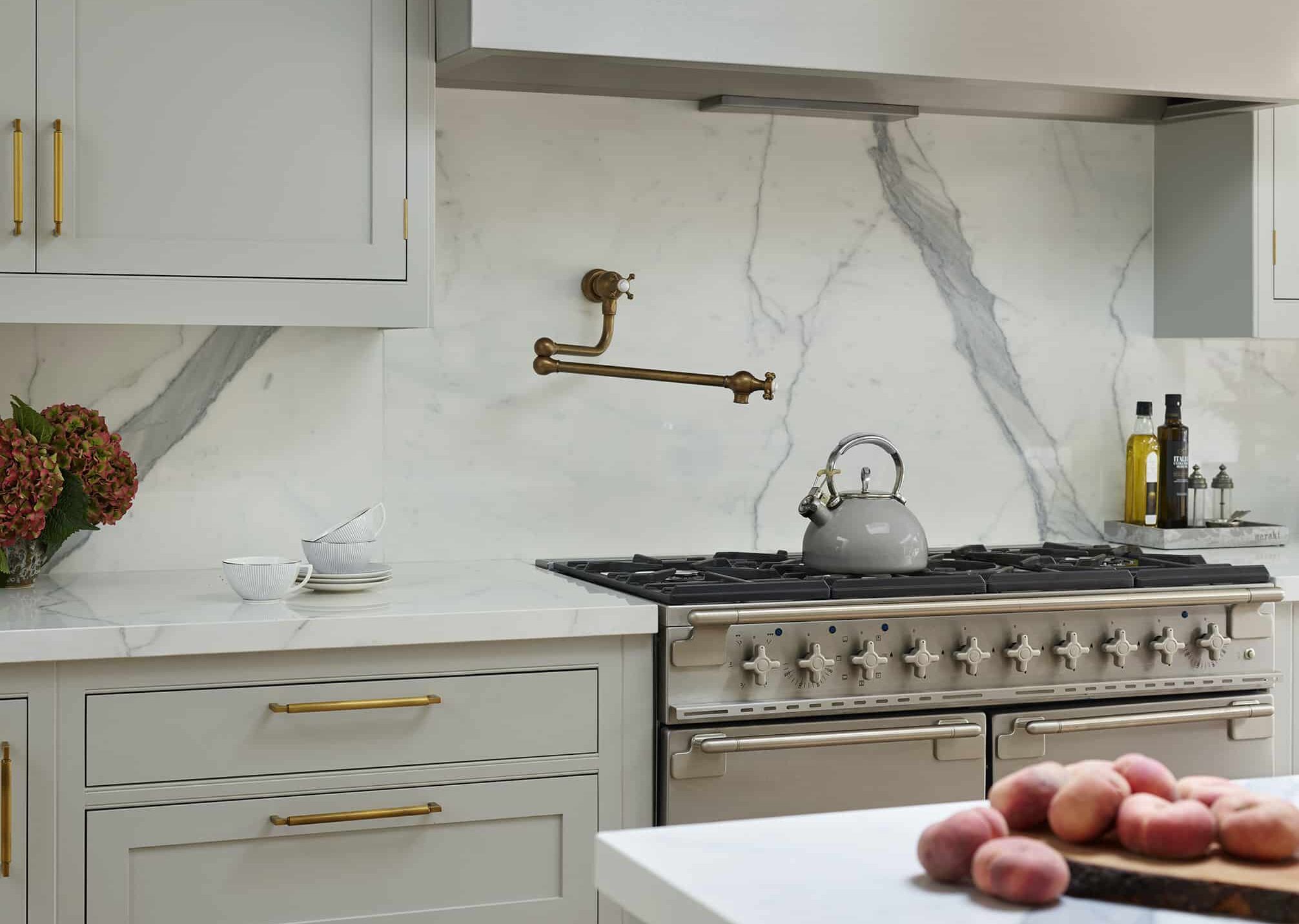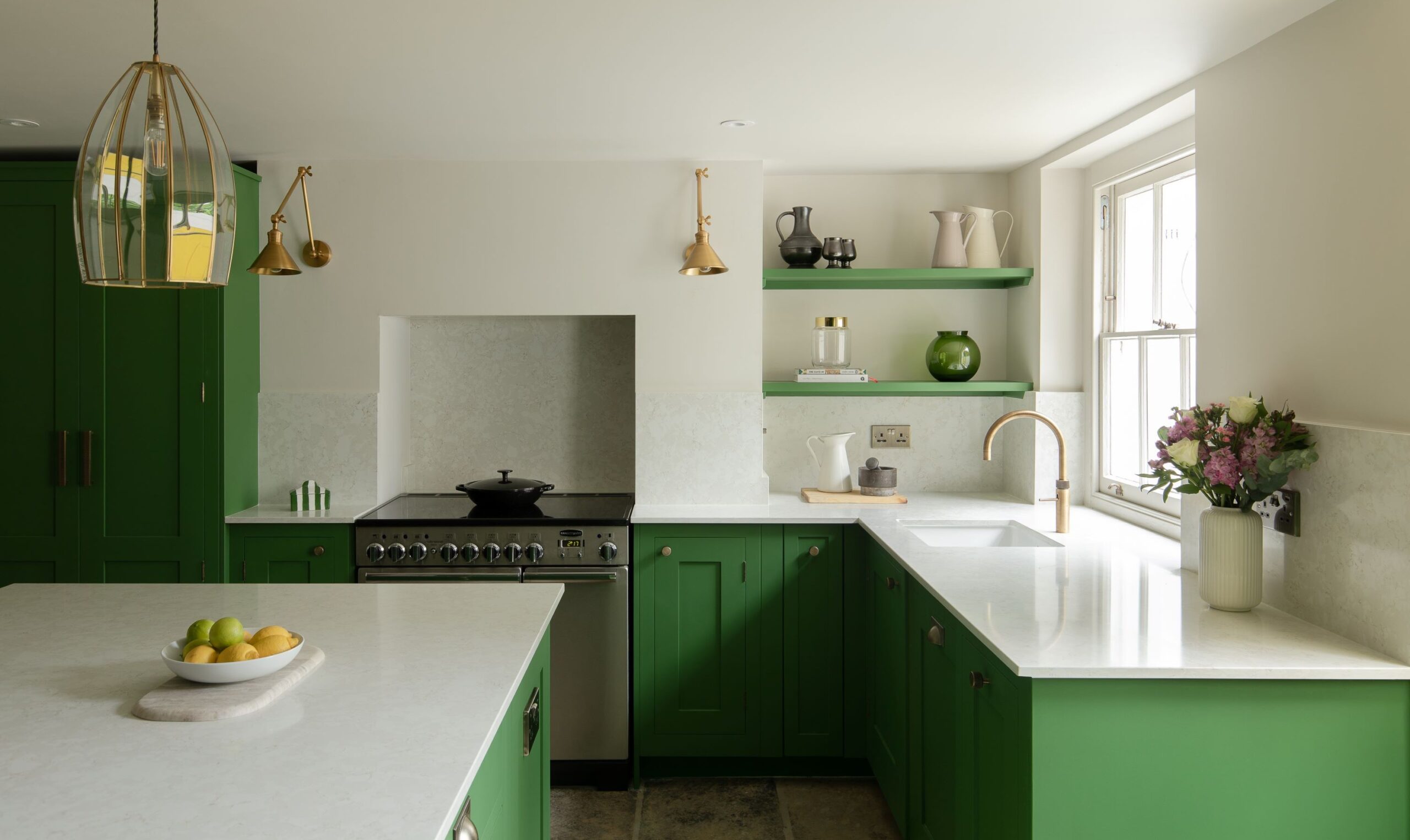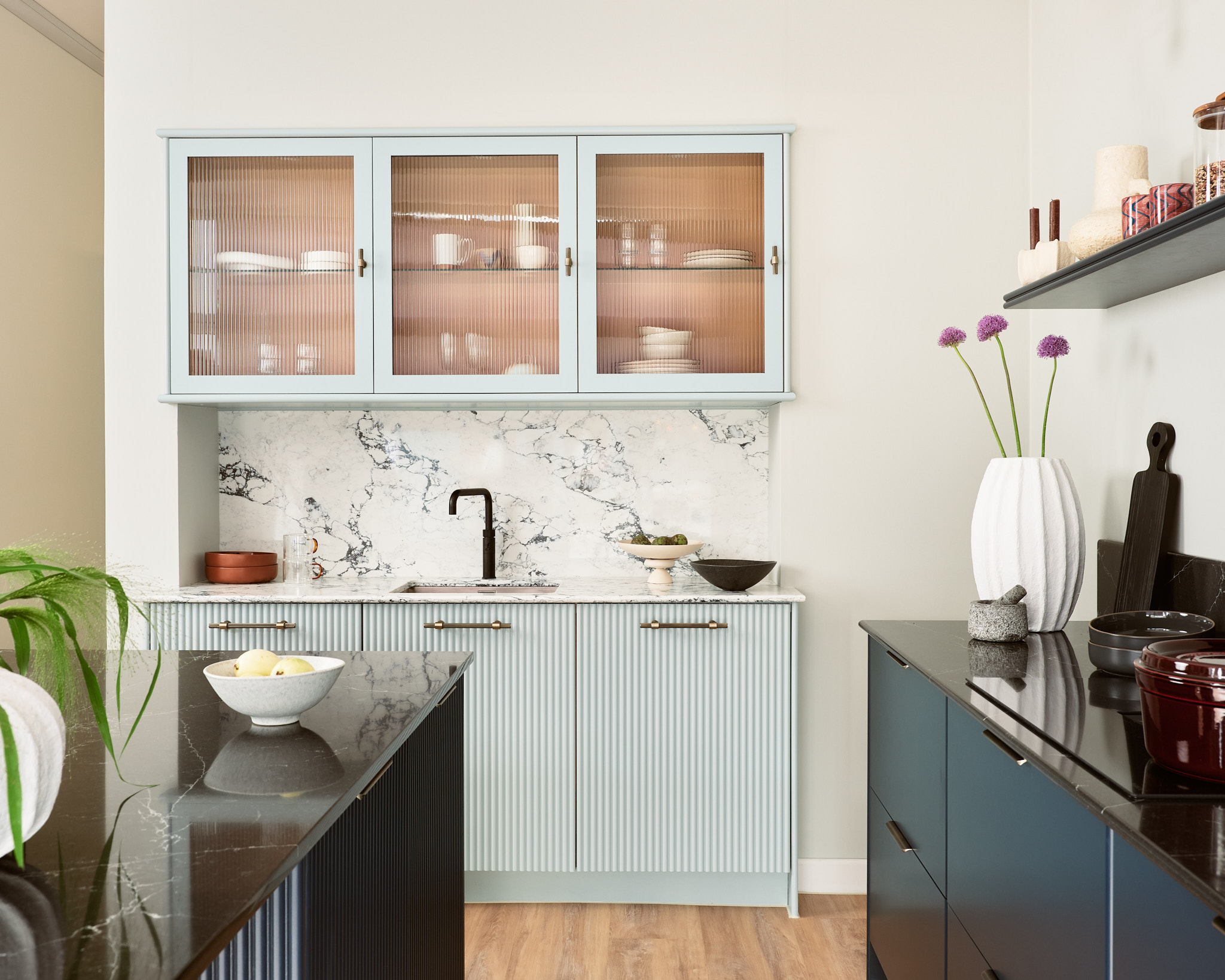
A pot filler tap is a luxury that’s beginning to crop up more and more in premium kitchen builds. Also known as a pasta arm or a kettle faucet, the tap is installed over a stove to allow for easy pot filling without having to lug any heavy pans to and from the sink. These are separate from boiling water taps that dispense hot water on-demand and are generally fixed over the sink.
But with all the unique design features available to add wow-factor to elevate your kitchen, is a pot filler tap a practical amenity or just a needless expense? Here are the pros and cons to consider when making the decision for your kitchen.
What is a Pot Filler Tap?
A pot filler tap is a wall-mounted, swing-out faucet installed above the stove to make filling large pots directly on the hob quick and easy. It eliminates the need to carry heavy pots back and forth between the stove and the sink. Its extending arm can be pushed back against the wall when not in use, saving space and reducing kitchen clutter. While not connected to hot water, it’s incredibly convenient for day-to-day cooking tasks.
Why Are There Two Knobs on a Pot Filler Tap?
The two knobs on a pot filler tap serve a specific purpose. The first knob, located at the wall connection, controls the water supply, while the second knob at the end of the spout allows for fine control over the water flow. This dual-knob system offers extra convenience and safety, letting you easily stop the flow of water at the stove without needing to reach back to the wall.
Should Pot Filler Taps Be Hot or Cold
Pot filler taps are usually connected to the cold water supply. This is because cold water is considered fresher and contains fewer impurities than hot water, which has often been sitting in your pipes. Cold water is also safer for filling pots, especially since you can then heat it to your preferred temperature directly on the stove. For these reasons, cold water is the recommended choice for pot filler taps.
What is the Best Position for a Pot Filler Tap?
At Harvey Jones, we recommend positioning your pot filler tap around 6 to 10 inches above the stove’s largest burner. This height provides enough space to fill tall pots without splashing while keeping the tap easily accessible. Pot filler taps are often placed slightly off-centre, which helps avoid interference with other burners and makes the stove area more functional.
The advantages
For budding chefs and busy homemakers, the pot filler tap could be an efficient tool to help streamline family dinner times. These are the advantages of installing one in your kitchen.
Quick cleanup
By keeping all your pots stationed on the hob to bubble away, you can minimise mess and take the stress out of kitchen cleanups. Pot taps reduce the toing and froing with heavy pans and prevent all those frustrating spillages that occur in the process. An extra tap also gives you another way to get water when the sink is full of dirty washing-up so that you can wipe down your surfaces after dinner without having to use an otherwise occupied sink.
Multitasking without the madness
Speaking of washing up, pot filler taps might be just what you need to convince certain members of the family to help out while the lead chef works at the stove. With the sink decluttered, there’s no excuse for others not to wash, dry, or assist with other food prep. Having a dedicated kettle faucet in the kitchen could be a multitasker’s dream, especially for cooking in a family kitchen when dealing with limited space.
Less carrying, more cooking
From pasta bakes to curry and rice, lots of our daily cooking involves heavy pans full of water — and sometimes very hot water at that. By installing a pot filler tap, you could reduce the strain from lugging your kitchenware back and forth to the sink, and cut the risk of any injuries or burns. Day to day, this is practical if you often deal with entertaining duties as it will save you from manoeuvring lots of utensils around a busy kitchen. Those who have special needs may especially benefit from this feature, as well as those who suffer from arthritis.
The disadvantages
When introducing home improvement features, there are always costs to be weighed against potential benefits. These are the disadvantages of the trendy tap.
The leak risk
As with any plumbed feature, pot filler taps are a leak risk. Even if you remember to turn it tight and stop drips in their tracks, malfunctions can happen. While this is no problem for your regular faucet and sink, pot fillers are fixed to your backsplash — and a leak directly onto your stove could cause some considerable damage. If you’ve purchased a shiny new range cooker in your remodel, this might not be an expense you’re willing to risk.
More maintenance
Though your decluttered sink might stay nice and clean, you’ll have another fixture to keep shiny and new. Grease can quickly accumulate around the stove, and your chromed new pasta arm with its intricate joints and angles will be no exception. So, think carefully if the practical benefit of another tap will be worth the upkeep tradeoff that comes with it.
The price of premium
Plumbing in a brand-new tap can be expensive, especially if you’re working around existing kitchen fixtures. For all its benefits, the additional cost of introducing a pot filler tap to the average kitchen might not make for a worthwhile investment. If you’re on the fence, think about your cooking habits, how busy a kitchen you run, and the numbers you tend to cater for.
To get a remodel that’s tailored to your needs, it’s best to weigh up these pros and cons and consider whether a pot filler tap is one of your kitchen necessities.
For more help designing your dream kitchen, request a brochure or visit us at one of our showrooms today.





